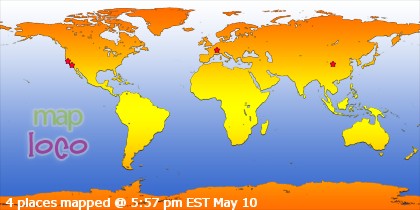 BBC West Midlands
BBC West Midlands
There can be few more public nesting sites for peregrine falcons.
Usually their nests are found in remote areas, often around the coast, resting on cliff edges and rocky outcrops. To see them would require specialist climbing gear and a long lens.
But here in Worcester, a pair have nested bang in the city centre - it is possible to clearly see the adults coming and going during the day and now the chicks have begun to hatch, one is often seen standing guard over the nest.
They have built their eyrie on St Andrew's spire, known locally as The Glover's Needle.
Seagull threat
The main body of the 15th Century church was demolished more than 50 years' ago, all that is left is the tower and the steeple - where the church once stood, there is a pretty riverside park.
This means the falcons are safely isolated and the city council has been able to put extra security measures in place to protect the nest.
The greatest threat comes from marauding seagulls who have also made the city their home, but the peregrines have successfully fought them off and hatched the first two of four eggs.
"They're very well looked after and watched, the webcam is just one thing. There are lots of other things around; the Fire station's opposite and the lads there are watching too" said Chris Dobbs, Worcester City Council's landscape architect, who is in charge of the site.
Over the bank holiday weekend, a television monitor was set up at the base of the tower showing live pictures of the nest, and, as word got out, hundreds of people came from all over the country to see the chicks being fed.
The monitor has been taken away until next weekend, and now thousands are logging on to the city council website to see streamed pictures from the nest.
Most of the time the mother and father take it in turns to roost, keeping the eggs and chicks warm but hidden from view. People are eagerly waiting for feeding time when it should be possible to see whether the third or even the fourth eggs have hatched.
"When we saw the second chick for the first time it was absolutely fantastic, and people have been coming down for the last few days since word got out that we'd had the hatching" said Ross Lawson from the RSPB.
Brink of extinction
"We've seen the two baby chicks and the mother feeding them," said nine-year-old Emily Norman. Along with her twin brother Thomas and her elder sister Sadie, they have been coming down every day. Thomas has named the two chicks Columbo and Squeaky.
Peregrine falcons have come back from the brink of extinction in the UK thanks to conservation laws, and the banning of certain types of pesticides.
In recent years they have begun to colonise towns and cities, though rarely in so public a place as St Andrew's.
They hunt on the wing, and their main food supply in urban areas is pigeons. They also take other small birds and occasionally the odd, small mammal.
Peregrine falcons are protected, but as their numbers have increased along with many other birds of prey, there have been calls for their protected status to be lifted.
Pigeon fanciers are particularly concerned when peregrines move into the area.
SOURCE: BBC News
Tuesday, May 06, 2008
Falcons take up city-centre perch
Labels: .circus., birds of prey, Falcon
Subscribe to:
Post Comments (Atom)














0 comments:
Post a Comment